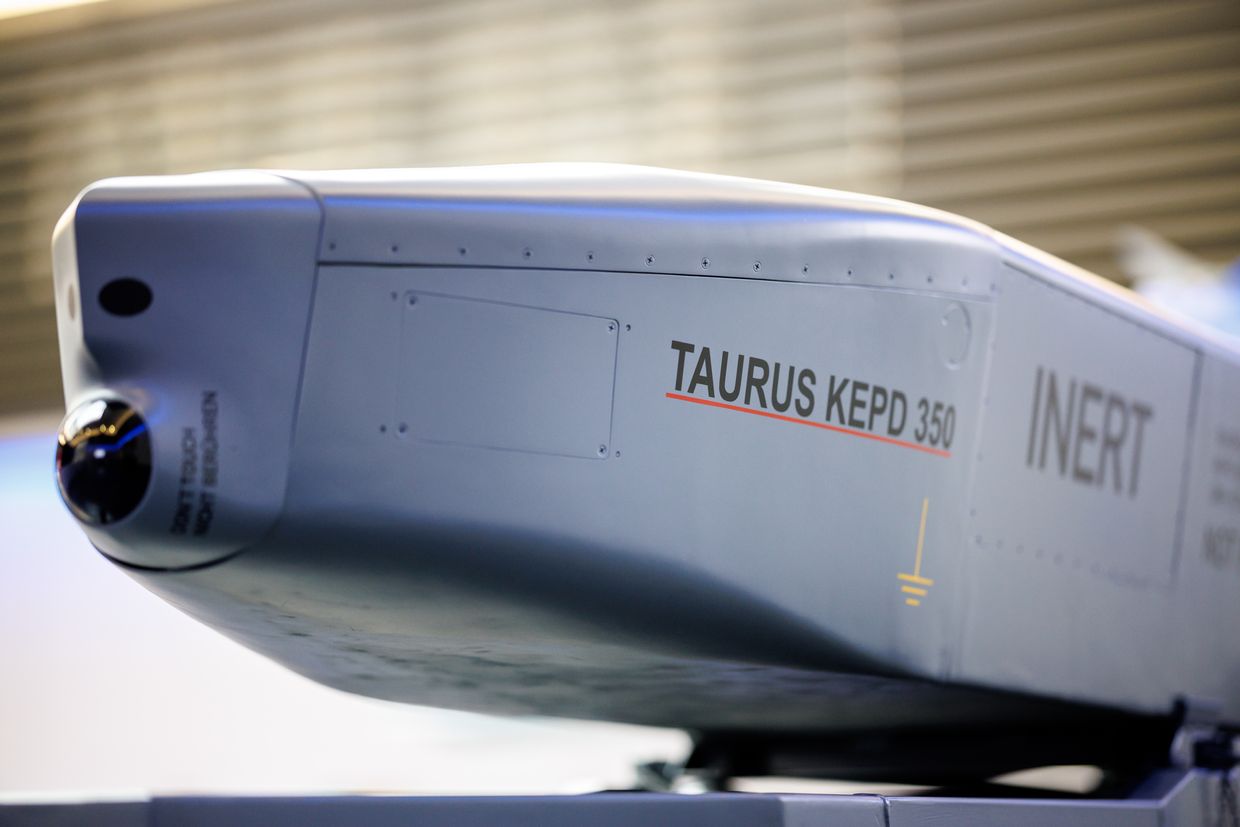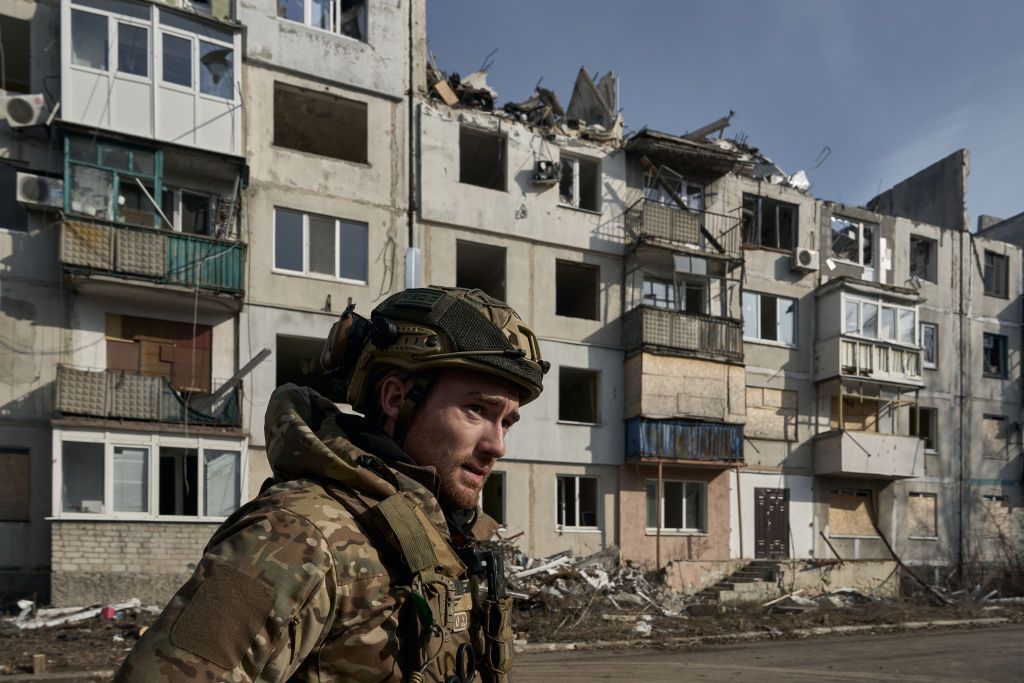Ukraine has turbo-charged its long-distance unmanned aerial vehicles (UAVs), making “rocket-drones” to compete with cruise missiles or save the trouble of asking for more Western-made ranged weapons.
President Volodymyr Zelensky’s administration has been showing off the latest results, with videos of the Peklo and Palianytsia missile-drones, which Ukrainian soldiers have begun deploying.
The “rocket-drone” project has become a key goal for Zelensky in 2025. In November, he told the Verkhovna Rada, Ukraine’s parliamentary body, that he wanted to see Ukraine produce 30,000 long-distance drones, and 3,000 “cruise missiles or missile-drones” over the next year.
These “missile-drones” are a new genre of weapons that Ukraine is pioneering.
Deploying new weapons to offset the lack of traditional ones isn’t a new move for Ukraine. Just as Ukraine has deployed UAVs to take on roles traditionally reserved for an air force, such as aerial surveillance and targeted bombing, the rocket-drones are evolving to perform functions of cruise missiles, which Ukraine doesn’t produce.
“They are basically the next evolution step of long-range deep-strike suicide UAVs,” says Fabian Hinz, a research fellow with the London-based International Institute for Strategic Studies who specializes in missiles. “As with so many things, because of technology, the lines are blurring.”
“Ukraine really is able to develop these small missile systems that are rather cheap, relatively easy to produce, but are still good enough to pack quite a punch and destroy some high-value targets, also deep inside enemy territory,” says Fabian Hoffmann, a doctoral research fellow at the University of Oslo’s nuclear project, similarly specialized in missiles.
What is a drone missile?
“Missiles and drones. A combination of words that until recently was something from fantasy. But today, a reality,” Zelensky said in a Dec. 10 speech, highlighting that the Palianytsia had gone into production and the first Peklos had gone to the front. He also revealed that a mysterious analog called the Ruta had just passed testing.
These missile-drones are mostly an evolution from Ukraine’s existing arsenal of long-range drones into something resembling a small cruise missile. In that metamorphosis, the key is speed.
Some long-range drones that Ukraine uses can already theoretically make it thousands of kilometers. The evolution of these newer models is primarily one of speed. Palianytsia, Peklo and Ruta tout max speeds of, respectively, 500, 700 and 800 kilometers per hour.
That is largely thanks to jet motors, which allow the newer models to outfly the 200 or so kilometers per hour that the piston engines on most existing long-range drones offer. Even the Iranian Shaheds — remarkably good long-range kamikaze drones — typically max out in the 300 kilometers per hour range.
“When you have a jet-powered UAV or a cruise missile you can simply buy engines off the shelf. So a lot of these systems probably use commercial off-the-shelf engines which you can just buy,” says Hinz, naming various German, Dutch and Czech manufacturers as likely candidates.
As the speed has grown between these three models, so too has the sophistication of their engines.
Based on the government diagrams, Hoffman says there’s no sign of a true turbojet engine on the Palianytsias.
Meanwhile, with the Peklo, “the engine is actually top-mounted,” says Hoffman. “The engine is outside the fuselage. And that makes manufacturing easier because it's not as sophisticated, but a problem with that approach is that it creates a massive, massive radar cross section.”
A jet engine needs a fast stream of air to provide oxygen to its fuel supply. Other engines either work slower or require an oxidizer to accompany the fuel itself — a major add-on in weight for a rocket that needs to go hundreds of kilometers.
Other than the set-up of their propulsion, these rocket-drones are structurally almost identical. Based on the government-released diagrams, the Palianytsia is a slight standout in having much larger winglets — to compensate for less updraft as a result of going slower, says Hoffman.
Some of Ukraine’s models are touching down on the battlefield for the first time. The Peklo and Palianytsia have been causing a particular stir across social media amid recent Ukrainian attacks on Taganrog and Bryansk.
The actual deployment of these drones is tough to confirm. They seem to show up in swarms alongside foreign missiles like U.S.-made ATACMS in a barrage on an airfield in Taganrog, east of Mariupol.
A popular Russian news Telegram channel identified wreckage in a village in Kursk as “tentatively” one of these Palianytsias in September, based on the fact that it had a jet engine.
After a recent attack on Taganrog, a Russian military-tied Telegram channel Rybar roundly denied that the attack involved a Palianytsia or Peklo, or any other kind of drone, saying it was “only six ATACMS missiles.” That channel claimed that the one Peklo in the air for that attack was shot down by a Russian MiG-29 over the Black Sea.
Another popular channel tied to the Ukrainian military wrote “at the end of the day, they’ll say they were ATACMS to avoid shaming themselves by pronouncing ‘Palianytsia’.”
The rocket-missile’s name is a type of Ukrainian bread that Russians find famously difficult to pronounce. The Peklo is a Ukrainian word for hell.
The Ruta is similarly patriotically named, dubbed in honor of an herb from one of Ukraine’s most famous songs, “Chervona Ruta,” so popular it’s often mistaken for a folk song.
The mysterious new drone, Ruta
Based solely on Ukrainian government statements, the Ruta is the most mysterious of the drones under testing.
While Zelensky acknowledged testing a drone by that name, it may not be, strictly speaking, a Ukrainian project.
Destinus, a company with registrations in Switzerland, France, and the Netherlands, was showing off a drone called RUTA with a structure almost identical to the other newly rocket-drones and stamped with a Ukrainian flag at a weapons conference in France this summer. Destinus’ founder and CEO, Mikhail Kokorich, posted pictures of the drone at the conference on his LinkedIn.
The Ukrainian government stays quiet about the producers of, particularly, its deep-strike drones. But fuselages from the Destinus Lord, a drone with an advertised range of 750 to 2,000 kilometers and a distinct resemblance to a Cessna with a square head, have turned up in social media posts purportedly from deep within Russia.
It’s a source of potential controversy. Kokorich is an EU-based Russian national who posted that he renounced his citizenship at the start of 2024 based on “fundamental disagreement with the Russian invasion of Ukraine and the policies of the Putin government,” after the U.S. government stopped contracting with his aerospace company, Momentus, due to its foreign ties back in 2021, sending its value plummeting from a peak of over $1.5 billion. The current French corporate registration for Destinus lists his citizenship as Grenadian, which sells citizenship in exchange for $200,000 in local investment.
French business magazine Challenges wrote a profile on Kokorich, focusing heavily on death threats from Russian leadership.
Most information available about the Ruta is on Destinus’ site, which lists primary advantages of combination of “low cost, payload size and speed.” It includes specifications for a low-cost and lightweight jet turboengine.
Destinus did not respond to a request for comment.
Among the new rocket-drones, Hoffman, for one, is most impressed with the Ruta.
“For the Ruta, in terms of the engine, it's the most sophisticated one because it has a bottom-mounted air inlet, according to the pictures that we've seen,” said Hoffman. “That’s similar to the (American) Tomahawk, for example. The engine is inside the fuselage and it only has an air inlet that sucks in the air, which is then compressed and mixed with the fuel inside the engine and then ignited to create the exhaust stream.”
He added that Ruta has advantages when it comes to stealth.
“If there's some radar close, it will definitely pick (the Peklo) up because the radar waves get scattered by the turbine engine blades at turning,” Hoffman said. “That creates a massive return to the radar. So these things are not very stealthy. And if you compare it to the Ruta, where the engine is inside and you only have a small air inlet, that thing is a lot stealthier.”
Smaller payload, smaller price
The concept of “rocket-drones” is novel. These new weapons split the difference between drones and traditional cruise missiles.
As with much of Ukraine’s drone developments, these are economical solutions. But that would be true on either side — if Kinzhals were free, Russia would never launch another Shahed.
Among major distinctions is that these rocket-drones hold much less explosive charge than traditional cruise missiles. Tomahawks and Storm Shadows, for example, carry around 450 kilograms of charge each. The new Ukrainian rocket-drones mostly feature payloads of around 100 kilograms.
But possibly a bigger weakness of these newer rocket-drones is that they are less stealthy and more vulnerable to electronic and navigational interference than more classical cruise missiles. But at the same time, they are significantly less expensive than traditional cruise missiles. The price per piece on these projects is somewhere under $300,000, which makes them significantly more disposable than, for example, the $1-million-a-piece Storm Shadows.
It’s a market that Hinz sees catching on.
“These type of longer-range suicide drones are a completely new thing, which we forget a lot,” says Hinz. “If you would have asked three years ago, what was the American equivalent to the Shahed — there was none.”
“Ukraine is walking into a space where there’s not really a lot of other states producing these types of systems,” says Hoffman. “This is actually something that the U.S. wants to do, but they haven't done until now.”
Note from the author:
Hi, I’m Kollen Post, the author of this story. If you found it valuable, please consider supporting the Kyiv Independent by becoming a member. Your support enables us to continue delivering high-quality, on-the-ground reporting that keeps the world informed about Ukraine. Join us here and make a difference today.












